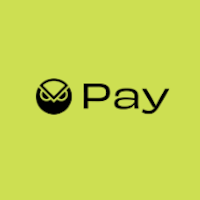About Self-Custodial Cards
About Self-Custodial Cards
Cards that allow you to maintain control of your crypto assets without surrendering private keys to third parties.
Self-custodial cards allow you to maintain control over your cryptocurrency assets while spending them. These cards typically don't require you to deposit funds with a centralized provider.
Compare our selection of self-custodial options if maintaining ownership of your private keys is a priority.
Self-Custodial Cards offer several unique advantages compared to traditional payment cards:
True Ownership
Maintain control over your private keys and crypto assets, adhering to the 'not your keys, not your crypto' principle.
Enhanced Privacy
Reduced exposure of personal financial data to third parties, maintaining greater financial privacy.
Censorship Resistance
Protection against potential account freezes or restrictions that can affect centralized crypto cards.
Direct Blockchain Settlement
Transactions that settle directly on-chain without relying on centralized clearing systems.
When selecting a card from this category, consider which of these benefits align best with your goals and priorities.
Top Self-Custodial Cards

Argent

Ether.Fi

Mercuryo

Solayer

Gnosis

Metamask

1inch
Comparing Self-Custodial Cards
When comparing self-custodial crypto cards, prioritize security mechanisms, transaction settlement transparency, and true key ownership rather than conventional rewards or perks.
Key Features to Compare
- Method of maintaining private key control
- Security features protecting self-custodied assets
- Transaction settlement process and transparency
- Integration with popular self-custody wallets
- Backup and recovery options
Comparison Tips
- Verify that the card truly never takes custody of your main crypto assets
- Understand the exact settlement process when a card transaction occurs
- Check for any centralized components that could compromise self-custody
- Research the team's background and security track record
The ideal self-custodial card provides true financial sovereignty without compromising on usability or requiring technical expertise for everyday use.
How to Choose a Self-Custodial Card
When choosing a self-custodial card, it's important to consider your specific needs and how you plan to use the card. Here are a few questions to keep in mind:
- What's the geographical availability of the card? Make sure it works in your country of residence.
- How does the self-custody mechanism work? Do you maintain control of your private keys?
- What's the settlement process when making a purchase with this card?
- Are there any security features to protect your self-custodied assets?
- How do the cashback rates compare to other fees like monthly charges or FX fees?
- What cryptocurrencies can you spend, and are there any conversion fees?
The top cards in this category have been selected based on a combination of these factors, but the best choice will ultimately depend on your personal preferences and priorities.
Frequently Asked Questions about Self-Custodial Cards
How do self-custodial crypto cards work without giving up control of my keys?
Are self-custodial cards more secure than centralized alternatives?
How do transaction confirmations work with self-custodial cards?
What happens if I lose my private keys or seed phrase?
Can self-custodial cards offer the same features as centralized options?
Comparison Table
| Card | Cashback | Staking | Effective Return | Availability | Details |
|---|---|---|---|---|---|
| Argent Metal | 3% | None | $20/mo (2.00%) | Europe 30 countries | View Details |
| Ether.Fi Pepe | 2% | None | $19/mo (1.85%) | South America & Europe 19 countries | View Details |
| Mercuryo Standard | 0% | None | -$12/mo (-1.19%) | Europe 32 countries | View Details |
| Solayer Standard Digital | 0% | None | $0/mo (0.00%) | South America, Europe & more 45 countries | View Details |
| Gnosis Tier 3 | 2% | 1 GNO tokens ($113) | $20/mo (2.00%) | Europe 35 countries | View Details |
| Metamask Standard | 1% | None | $10/mo (1.00%) | South America & North America 7 countries | View Details |
| 1inch Standard | 2% | None | $0/mo (0.01%) | Europe 31 countries | View Details |